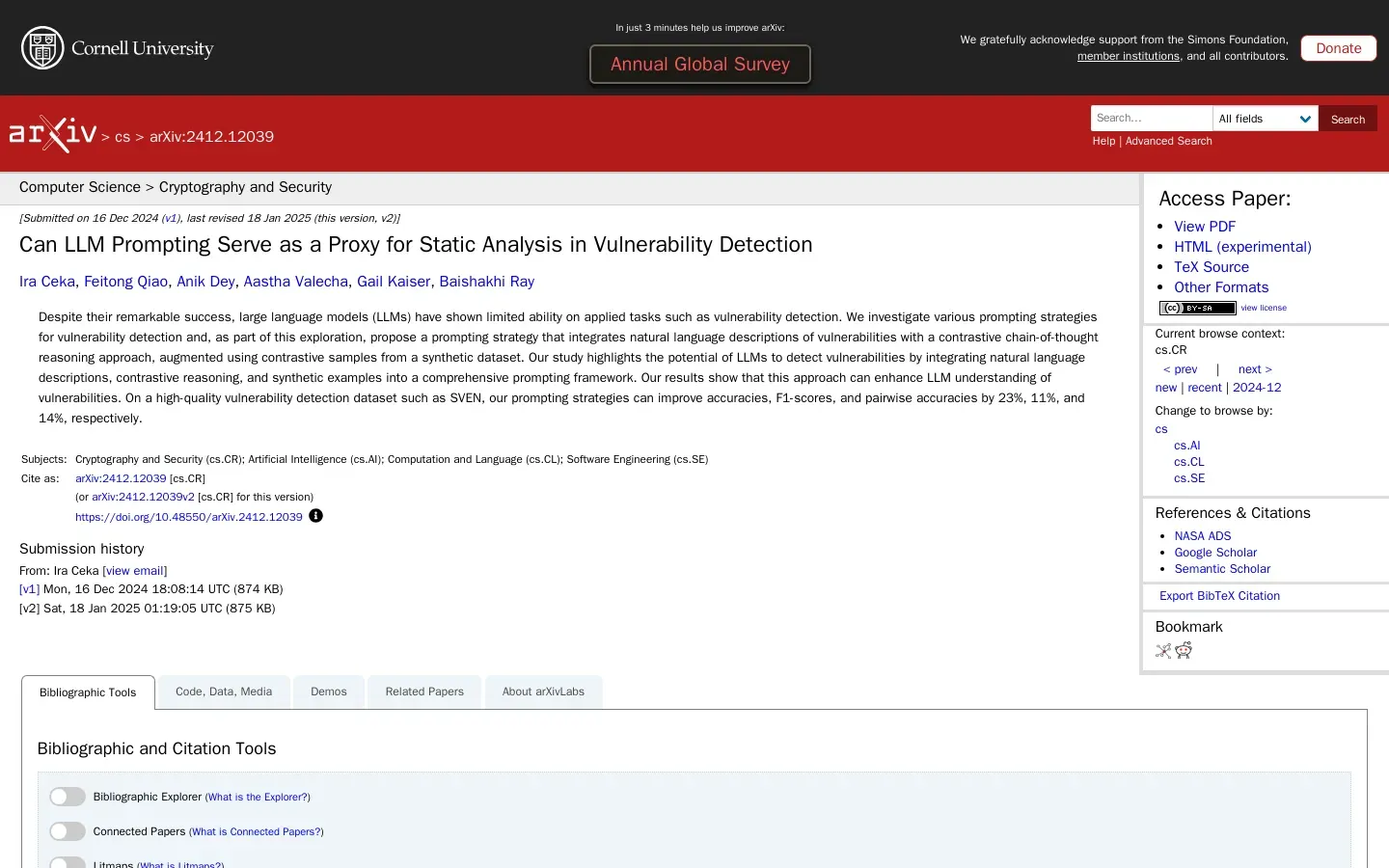
LLMs May Enhance Vulnerability Detection Methods
/ 4 min read
Quick take - A study has investigated the use of large language models (LLMs) to improve vulnerability detection in software development, demonstrating that effective prompting strategies can enhance their performance as proxies for traditional static analysis tools, while also highlighting the need for further research and domain-specific training.
Fast Facts
- Researchers evaluated the effectiveness of large language models (LLMs) in enhancing vulnerability detection in software development, using a dataset called SVEN.
- Innovative prompting strategies combining natural language descriptions and contrastive reasoning were developed, improving LLMs’ accuracy in identifying vulnerabilities.
- Integrating LLMs into DevSecOps pipelines can streamline vulnerability detection processes and promote security awareness among developers.
- The study emphasizes the need for domain-specific LLM training to improve nuanced understanding for effective vulnerability detection.
- Findings suggest that LLMs can provide real-time insights into emerging vulnerabilities, highlighting their potential in proactive cybersecurity measures.
In the ever-evolving landscape of cybersecurity, the quest to bolster defenses against vulnerabilities has taken an intriguing turn with the introduction of large language models (LLMs). Traditionally, vulnerability detection relied heavily on static analysis tools that, while effective, often struggled to keep pace with the rapid development cycles of modern software. As organizations increasingly embrace DevSecOps pipelines, the integration of LLMs presents a transformative opportunity, promising not only enhanced accuracy in identifying vulnerabilities but also a more adaptive approach to threat detection.
Recent research titled “Can LLM Prompting Serve as a Proxy for Static Analysis in Vulnerability Detection” delves into this dynamic intersection of artificial intelligence and cybersecurity. By evaluating the effectiveness of various prompting strategies on a high-quality vulnerability detection dataset known as SVEN, the study sheds light on how LLMs can significantly improve metrics like accuracy, F1-scores, and pairwise accuracies. The implications are profound: integrating these advanced models into existing cybersecurity practices could lead to a paradigm shift in how software vulnerabilities are detected and mitigated.
One of the standout methods highlighted in the research is the exploration of prompting strategies designed to enhance LLMs’ capabilities in recognizing code vulnerabilities. This exploration is not merely academic; it seeks to bridge the gap between theoretical models and practical applications that could reshape industry standards. As organizations look to streamline their security protocols, employing tailored prompting strategies may serve as a key lever for reducing risk in software development.
An exciting facet of this research is its focus on augmenting LLM training with synthetic datasets. By introducing contrastive samples from these datasets, researchers aim to deepen the model’s understanding of vulnerabilities—a step that could lead to a more nuanced detection process. This augmentation is particularly relevant in today’s fast-paced tech environment where new threats emerge almost daily. The incorporation of contrastive chain-of-thought reasoning further enhances this capability, allowing LLMs to analyze multiple scenarios and make informed predictions about potential vulnerabilities based on context.
Yet, as with any innovative technology, challenges remain. The integration of natural language processing with reasoning capabilities presents both opportunities and obstacles. While the proposed prompting strategies show promise, there is an ongoing need for thorough evaluation metrics and performance analysis to ensure that these models operate effectively within real-world environments. Understanding how these tools perform under different conditions will be pivotal in determining their efficacy.
Moreover, user education and awareness tools must evolve alongside these advancements. As organizations adopt these sophisticated models, ensuring that teams are equipped with the knowledge to leverage them effectively becomes paramount. Moving forward, fostering a culture of continuous learning and adaptation will be essential in maximizing the benefits offered by LLMs in vulnerability detection.
Looking ahead, the future implications of integrating LLMs into cybersecurity practices are both exciting and daunting. With ongoing advancements in AI technologies, we may soon witness a landscape where vulnerability detection is not only faster but also smarter—capable of anticipating threats before they materialize. As industries continue to innovate and refine their approaches to security, embracing such cutting-edge solutions will be vital for staying one step ahead in the relentless battle against cyber threats. The fusion of human expertise with machine intelligence heralds a new era—one where proactive defense mechanisms could redefine what it means to achieve security in an increasingly interconnected world.



